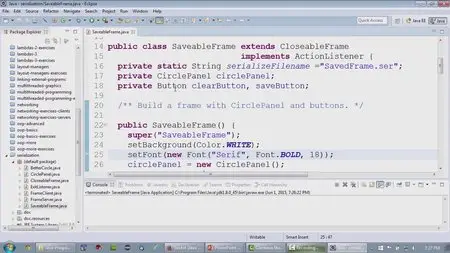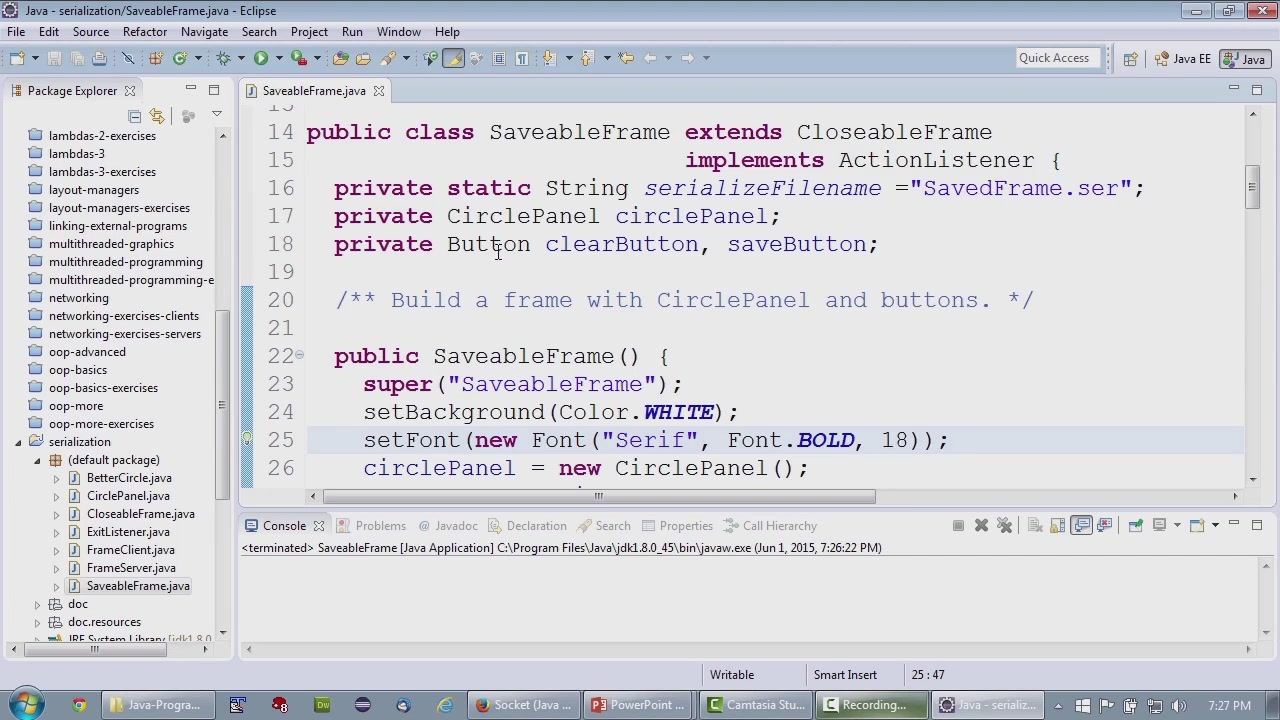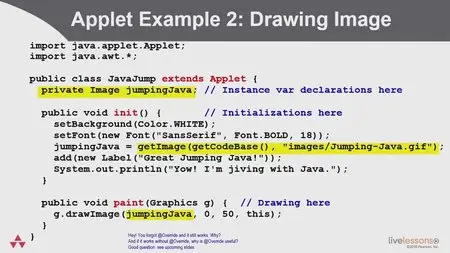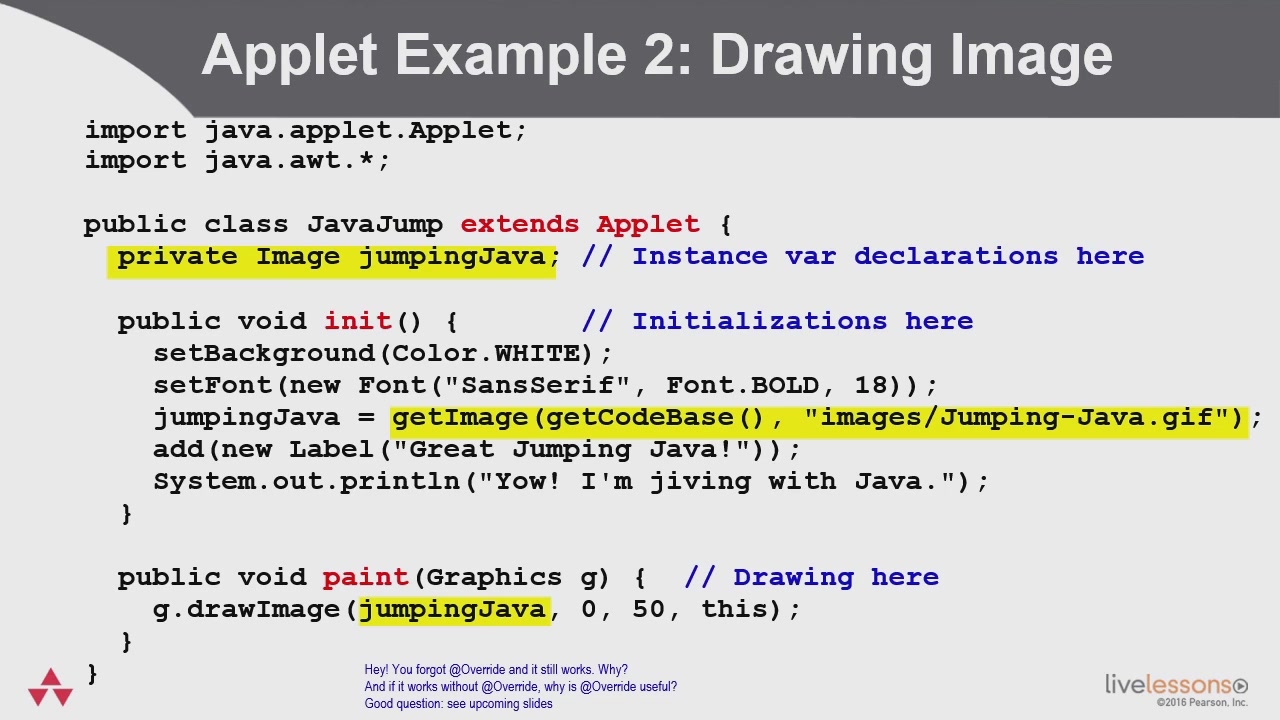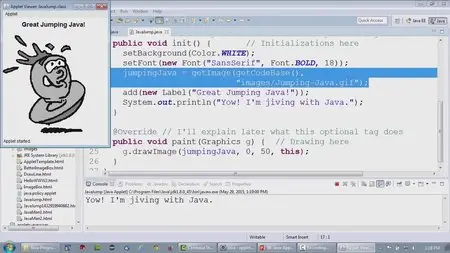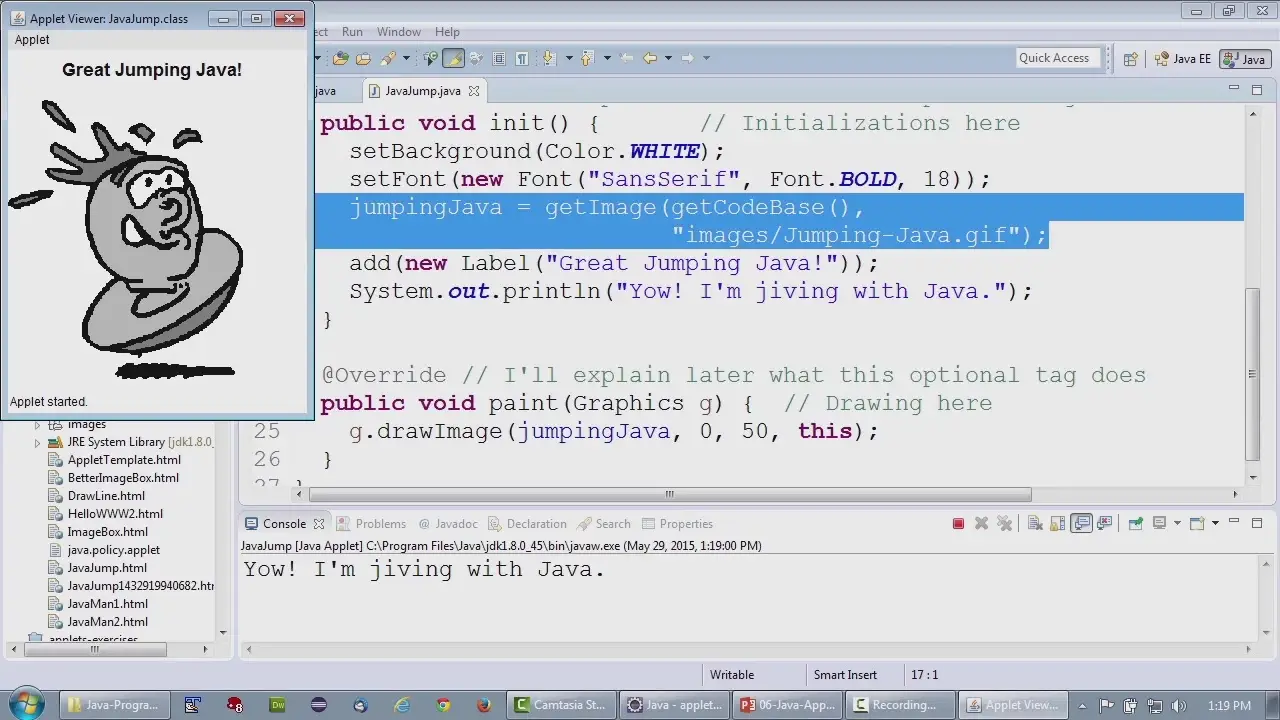LiveLessons - Learning Modern Java (2015)
MP4 | AVC 415kbps | English | 1280x720 | 30fps | 17h 49mins | AAC stereo 94kbps | 4.17 GB
Genre: Video Training
In these LiveLessons, expert Java developer, instructor, and author Marty Hall gives a crash course on Java programming. This fast-moving video series is aimed at developers who have used other languages, but who have little or no Java experience. The first section looks at installing Java and Eclipse, making projects, and understanding loops, conditionals, and other basic Java syntax. The second section covers object-oriented programming using the Java 8 style. Topics include classes, methods, constructors, interfaces, abstract classes, enums, and lots of guidance on style and best OOP practices. The third section looks at exception handling, lists and maps, generic types, printf, inner classes, and unit testing with JUnit. The fourth section looks at asynchronous event handling, concurrent programming with Java threads, and parallel programming using Java’s fork/join framework. The fifth section looks at the syntax and usage of lambda expressions and streams, with particular emphasis on best practices and the use of parallel streams.
The final section looks at file and network I/O: Java 8 stream-based file reading, network clients, network servers, and serialization.
Lesson 1: Java with Eclipse: Setup and Getting Started
1.1 Installing Java 8
1.2 Installing and Using Eclipse
Summary
Lesson 2: Basic Java Syntax
2.1 Setup, Execution, and Most Basic Syntax
2.2 The + Operator, Array Basics, and Command Line Args
2.3 Loops
2.4 Class Structure and Formatting
2.5 Conditionals
2.6 Strings
2.7 More on Arrays
2.8 Math Routines
2.9 Reading Input
Summary
Lesson 3: Basic Object-Oriented Programming in Java
3.1 Overview
3.2 Basics
3.3 Instance Variables
3.4 Methods
3.5 Constructors
3.6 Interactive Example: Person Class
Summary
Lesson 4: Object-Oriented Programming in Java: More Capabilities
4.1 Overloading
4.2 OOP Best Practices: Encapsulation and JavaDoc
4.3 Inheritance
4.4 Inheritance Example: Person Class
4.5 The toString Method
Summary
Lesson 5: Object-Oriented Programming in Java: Advanced Capabilities
5.1 Sample Problem
5.2 Attempted Problem Solutions
5.3 Abstract Classes
5.4 Interfaces
5.5 @Override
5.6 Visibility Modifiers
5.7 Enums
5.8 JavaDoc Options
5.9 The Classpath
Summary
Lesson 6: Applets and Basic Graphics
6.1 Motivation
6.2 Security Restrictions
6.3 Basic Applet Structure
6.4 Drawing in Applets: Basics
6.5 The Value of @Override
6.6 Applet Life Cycle Methods
6.7 Other Applet Methods
6.8 Attributes of the HTML Applet Tag
6.9 Applet Parameters: Letting the HTML Author Supply Data
6.10 Drawing in Applets: More Details
6.11 Loading and Drawing Images
6.12 Basic Try/Catch Blocks
Summary
Lesson 7: More Syntax and Utilities
7.1 Lists
7.2 List Operation Performance
7.3 Using Generic Types
7.4 Autoboxing
7.5 Maps
7.6 Building Genericized Methods and Classes
7.7 The Arrays Utility Class
7.8 printf
7.9 Varargs
7.10 StringBuilder
Summary
Lesson 8: Unit Testing with JUnit: A Very Brief Introduction
8.1 Static Imports
8.2 JUnit Overview
8.3 Modern Approach
8.4 Traditional Approach
Summary
Lesson 9: Asynchronous Event Handling
9.1 Overview
9.2 Using Separate Listener Classes: Basics
9.3 Using Separate Listener Classes: Drawing
9.4 Implementing a Listener Interface
9.5 Using Named Inner Classes
9.6 Using Anonymous Inner Classes
9.7 Preview: Using Java 8 Lambdas
Summary
Lesson 10: Multithreaded Programming in Java
10.1 Overview
10.2 Basic Steps for Concurrent Programming
10.3 Approach One: Separate Class that Implements Runnable
10.4 Approach Two: Main App Implements Runnable
10.5 Approach Three: Inner Class that Implements Runnable
10.6 Preview of Approach Four: Lambda Expressions
10.7 Summary of Approaches with Pros and Cons
10.8 Making a Reusable Multithreaded Server: Template
10.9 Race Conditions: Problem
10.10 Race Conditions: Solution
10.11 Helpful Thread-Related Methods
10.12 Brief Summary of Advanced Topics
10.13 Tricky Synchronization Problem
Summary
Lesson 11: Parallel Programming with the Fork/Join Framework
11.1 Overview
11.2 General Fork/Join Approach
11.3 Aside: Reusable Timing Code
11.4 Summing Large Array of Doubles: Version 1: Code
11.5 Summing Large Array of Doubles Version 1: Verification Step
11.6 Making Reusable Parallel Array Processor
11.7 Summing Large Array of Doubles: Version 2
11.8 Computing Minimum of Expensive Operation
11.9 Generating Large Prime Numbers
Summary
Lesson 12: Lambda Expressions—Part 1: Basics
12.1 Motivation and Overview
12.2 Lambdas: Most Basic Form
12.3 Type Inferencing
12.4 Expression for Body: Implied Return Values
12.5 Omitting Parens
12.6 Summary: Making Lambdas More Succinct
12.7 Example: Numerical Integration
12.8 Making a Reusable Timing Utility
12.9 A Few More Samples
Summary
Lesson 13: Lambda Expressions in Java 8—Part 2[/b
13.1 The @FunctionalInterface Annotation
13.2 Method References
13.3 Lambda Variable Scoping in Lambdas
13.4 Effectively Final Local Variables
Summary
Lesson 14: Lambda Expressions in Java 8—Part 3: Lambda Building Blocks in java.util.function
14.1 Overview: Lambda Building Blocks
14.2 Simply-Typed Building Blocks
14.3 Generic Building Blocks: Predicate
14.4 Generic Building Blocks: Function
14.5 Other Generic Building Blocks
Summary
Lesson 15: Lambda Expressions in Java 8—Part 4
15.1 Java 8 Interfaces: Static Methods
15.2 Java 8 Interfaces: Default Methods
15.3 Resolving Conflicts with Default Methods
15.4 Higher Order Functions: Methods that Return Functions
15.5 Higher Order Functions in Predicate
15.6 Higher Order Functions in Function
15.7 Higher Order Functions in Consumer
15.8 Higher Order Functions in Your Own Code
Summary
Lesson 16: Streams in Java 8—Part 1
16.1 Overview of Streams
16.2 Getting Standard Data Structures into and out of Streams
16.3 Core Stream Methods: Overview
16.4 forEach: Calling a Lambda on Each Element of a Stream
16.5 map: Transforming a Stream by Passing Each Element through a Function
16.6 filter: Keeping Only the Elements That Pass a Predicate
16.7 findFirst: Returning the First Element of a Stream while Short-Circuiting Earlier Operations
16.8 Lazy Evaluation
Summary
Lesson 17: Streams in Java 8—Part 2
17.1 Operations that Limit the Stream Size: limit, skip
17.2 Operations that Use Comparisons: sorted, min, max, distinct
17.3 Operations that Check Matches: allMatch, anyMatch, noneMatch, count
17.4 Number-Specialized Streams
17.5 The reduce Method and Related Reduction Operations
Summary
Lesson 18: Streams in Java 8—Part 3
18.1 Grouping Stream Elements: Fancy Uses of collect
18.2 Parallel Streams
18.3 Infinite (Unbounded On-the-Fly) Streams
Summary
Lesson 19: Simplified File I/O: Applying the Power of Streams
19.1 More on try/catch Blocks
19.2 Paths
19.3 Simple File Reading
19.4 File Reading Examples
19.5 Simple File Writing
19.6 Exploring Folders
19.7 Faster and More Flexible File Writing
Summary
Lesson 20: Network Programming: Clients
20.1 Overview
20.2 Basic Steps for a Client to Connect to a Server
20.3 A Reusable Network Client Base Class
20.4 Aside: String Formatting and Parsing
20.5 Problems with Blocking IO
20.6 Talking to Web Servers: General
20.7 Talking to Web Servers: A Java Client
Summary
Lesson 21: Network Programming: Servers
21.1 Basics
21.2 Simple Warmup: A Single-Threaded Server
21.3 A Base Class for a Multithreaded Server
21.4 A Simple Multithreaded HTTP Server
Summary
Lesson 22: Serialization: Sending Complex Java Data Structures to Files or Over the Network
22.1 Overview
22.2 Sending Data
22.3 Receiving Data
22.4 Example: Sending Entire Window to File or Socket
Summary
Summary
No mirrors please




